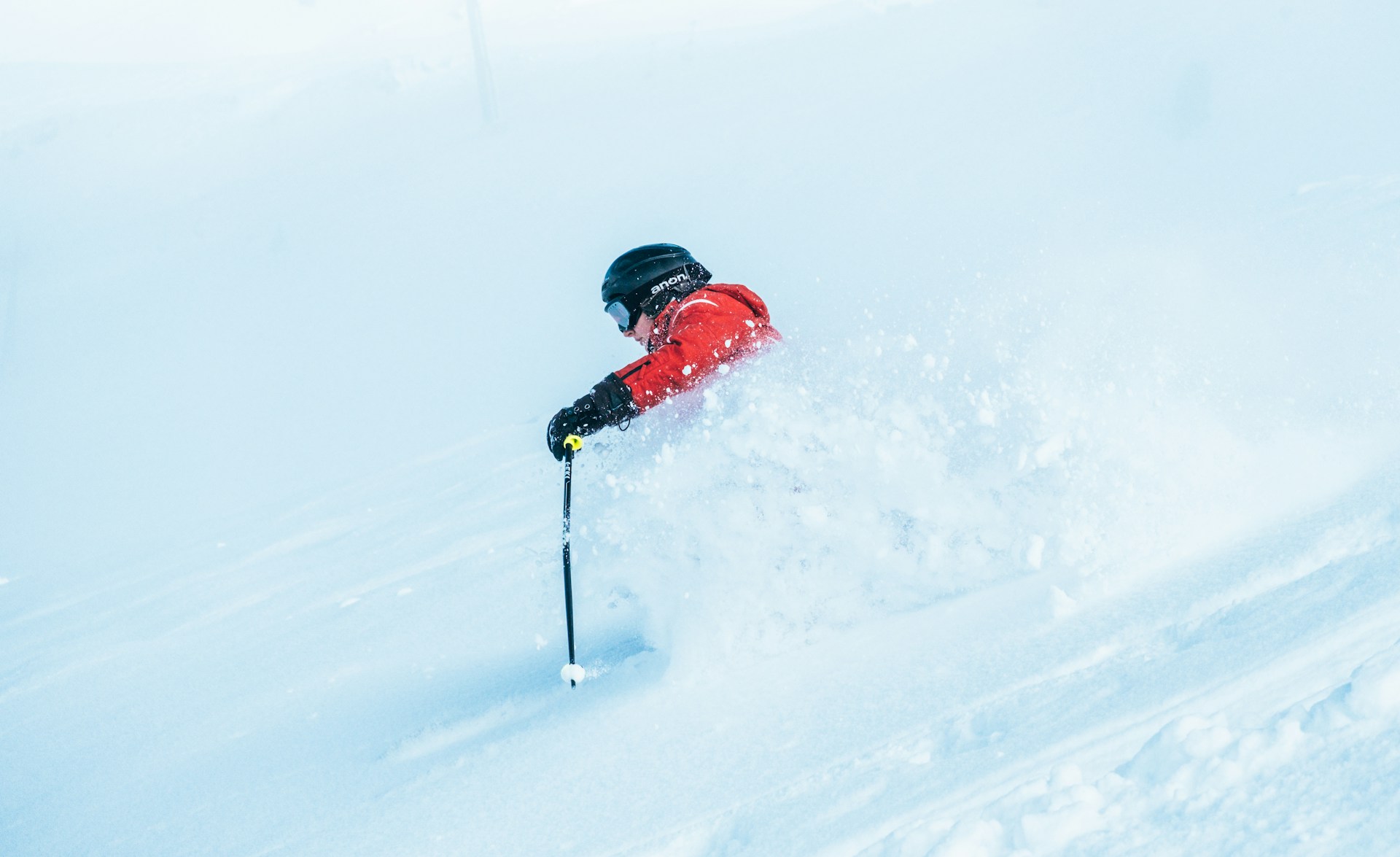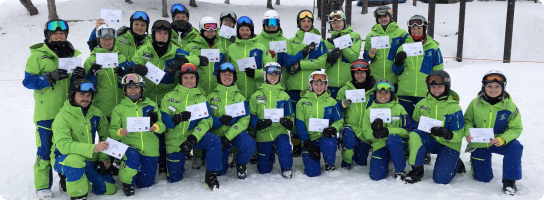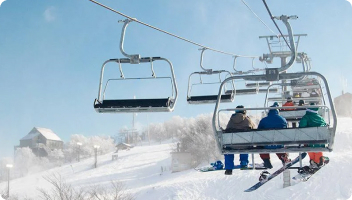Ski and snowboard instructor positions are some of the most sought-after jobs in the industry despite the large number of employment options available at ski resorts.
It’s imperative to choose the best and most straightforward pathway to get your ski instructor’s jacket as the competition is fierce and there is less demand for instructors compared to 10 years ago. This post will explore what it takes to become an instructor, how you can become one and what to expect from a career as an instructor.
But First… Passion
As with any hobby you love and want to turn into a full-time career, you need passion. Passion is what makes a ski or snowboard instructor. If you’re passionate from the beginning it’ll show in your progression through training levels and ultimately through your teaching.
Money should not be your sole motivator. A newly qualified snowsports instructor shouldn’t expect to riches in their first season, but it can be a career that brings huge satisfaction to those that pursue it.
By teaching and continuing ongoing training you’ll naturally improve your own technical ability as well as increasing your wage (and don’t forget incredibly generous gifts from clients from time-to-time).
Qualifications and Examining Bodies
Different countries have different standards and levels of training required to be an instructor. However, the International Ski Instructors Association (ISIA) has worked hard to bring a level of consistency to the snowsports instruction industry and now maintains a minimum level of certification across 39 different countries and states.
These include Australia, New Zealand, Canada, Japan, USA, and Switzerland, among others.
The ISIA is the world body for snowsports instructors and brings instructors of alpine skiing, snowboarding, telemarking and cross-country skiing together under one umbrella. The common objective of any training administered by the ISIA is to enable all candidates to give professional snowsport lessons.
Within the ISIA you will find members from:
- APSI (Australian Professional Snowsports Instructors Inc)
- NZSIA (New Zealand Snowsports Instructors Alliance)
- BASI (British Association of Snowsports Instructors)
- CSIA (Canadian Ski Instructors Alliance)
If you receive a qualification from a membership organisation of the ISIA, you are entitled to work within any of the other ISIA countries. This gives you huge flexibility to travel, find work, and do enviable back-to-back winters.
There are some exceptions, such as France and Austria which have their own instructor education systems. France, in particular, requires (by law) a considerable amount of training and examination to qualify as an instructor. This makes it a very difficult country to start your instructor career in as it involves years of training.

Photo: these guys look happier than most to be heading to work don’t they?
Levels of Certification
Across the board there are different levels of certification under the ISIA.
Level 1
This is the fundamentals course for anyone wishing to enter the snowsports instruction industry. Level 1 training takes you right back to the necessary basics to teach clients who have never before been on snow.
It can be eye-opening! You’ll cover guest service elements, safety, emergency situations, class handling, and overall improve your own skiing and riding ability. Once completed, you’ll be able to competently teach beginner through to intermediate skiers or snowboarders.
The Level 1 exam is generally over three to five days and has two components: your own skiing or riding ability; and on-hill teaching ability.
Level 2
Level 2 training builds on the fundamental skills learnt in level 1 with the aim of teaching intermediate to advanced clients. You’ll progress to teaching and riding on varied levels of terrain and also start building up a ‘toolbox’ of methods to assist when instructing. The exam format varies but will include both teach and riding components.
Level 3
Level 3 training is for instructors who want to progress to teaching advanced and expert clients and in all-mountain situations.
Level 4/Trainer Certification
Considered the highest level of certification under the ISIA, level 4 is for those who wish to train staff and candidates going for their Level 1 and 2 certifications.
Other Certifications
It’s possible to add different certifications to your portfolio each year to assist in increasing your employability. Other certification options include Children’s Teaching certificate, Race certificates, Freestyle, Adaptive, and Telemark. A dual certification is a consideration when increasing your teaching capacity and employability, if you are already able to ski and snowboard.
 Photo: Niseko, Japan – a popular place for ski and snowboard instructors
Photo: Niseko, Japan – a popular place for ski and snowboard instructors
Choosing a Course
How do you choose the right course for you? With so many options to choose from it’s easy to feel overwhelmed. Particularly difficult is choosing a course suited to where you want to be at the end or in a few years’ time.
There are two main ways to gain your snowsports instructor certification:
- Instructor training programs
- Instructor internship programs
An instructor training program is a course put on by a ski school which consists of all the training and tuition required, followed by an examination. These vary in length from three to five weeks meaning they’re a great option if you’ve already used your working holiday visa, are above the age limit for a working holiday visa or are a career-breaker.
They’re also a cool option if you wanted to gain a qualification from a winter ski holiday. (This would enable you to teach back in your home country on a dry slope or similar).
An instructor internship program works similar to this, but also includes an element of employment for after you finish your course. Getting your first instructor job can be challenging so the internship model helps increase your employability and gives you some practical work experience which is vital in the highly competitive snow sports instructor industry.
Training Providers
There are many different training providers who organise instructor training programs. Each company services one or more resorts and will help you join other like-minded trainees to gain your qualifications. Here are some of the biggest names:
- WE ARE SNO – Instructors
- SnowSkool
- Nonstop Ski & Snowboard
- EA Ski & Snowboard
An alternative method for people who already live and work at a ski resort is to look for weekend or intensive instructor training programs direct from the ski school – some of the larger resorts will run programs throughout the winter.
Working as an Instructor
Being a snowsports instructor isn’t for everyone. It requires hard work, a proactive nature and an ability to sell yourself to people in need. Experience is key to becoming a successful ski or snowboard instructor, which means the first few seasons may be tough, but worth it!
There will be times when you will be expected to go out when the wind is howling and visibility is so poor you can’t see your own hand in front of your face.
There will also be times when it’s a bluebird day, you’re up to your knees in fresh powder and are teaching a group of ‘never-ever’ beginners. It’s a small price to pay for such a great job with so many perks.
Salaries and Wages
Wages for instructors vary considerably between different countries and resorts. Bottom line is pay isn’t great at entry-level instructing and no one is going to get rich in their first season instructing. Of course, as you acquire more experience and qualifications your wages will increase.
Over the years you will find clients that return year on year and may even book you for their entire holiday. This is where passion and perseverance come in. If you sell your services to your current clients you could end up having them request you for their holiday next season. Building up a good returning client base is a great way to secure work for the next season.
Resorts and Finding Jobs
The higher qualified you are as an instructor, the easier it is to find a job. There are fewer highly qualified instructors meaning you can teach a larger range of clients.
You are most likely to find a job if you are already at a resort. This is particularly the case for bigger resorts as they generally have a greater need for instructors. The easiest way to do this is to apply directly to the ski and snowboard school you are interested in through their website.
Never underestimate the power of networking and word-of-mouth. Anyone you meet on your course or within the resort will potentially have links to other ski schools. The work you put in while you’re gaining your instructor qualification could stand you in good stead when looking for employment for the next season.
With all the benefits that come with the job, it’s no wonder ski and snowboard instructing is one of the most popular jobs at ski resorts!





